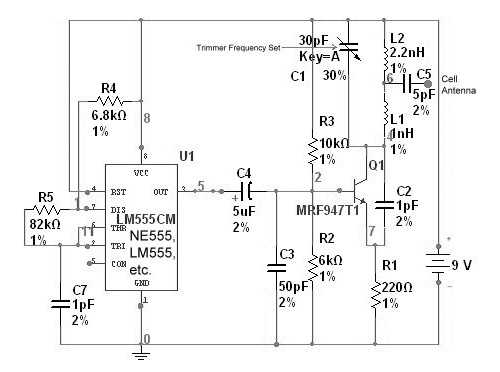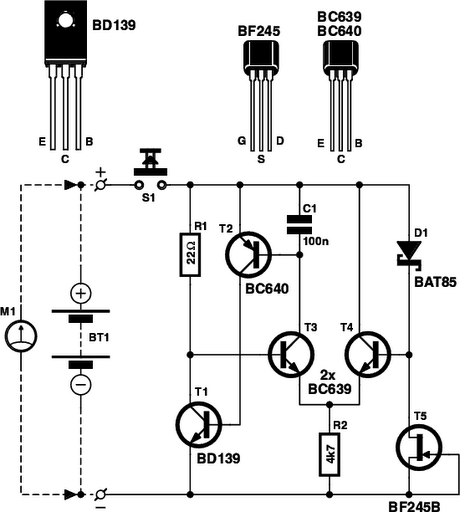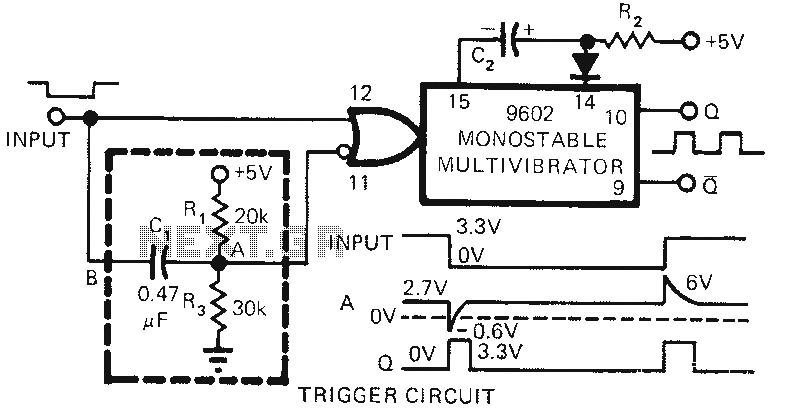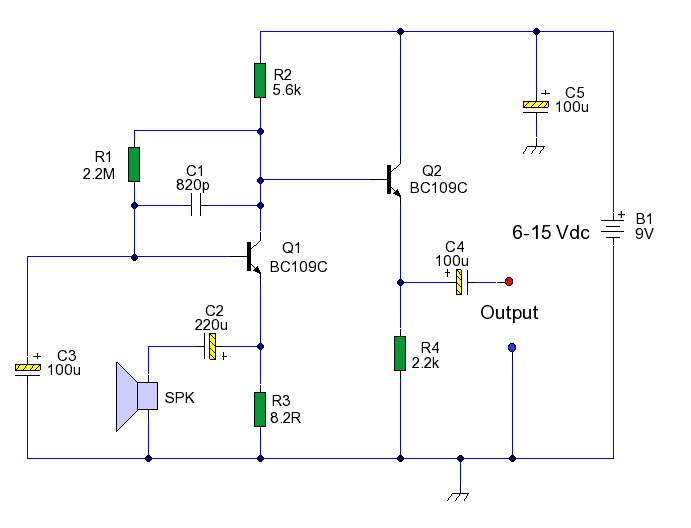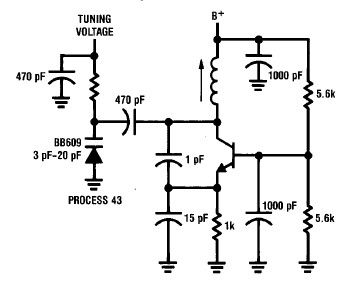
Simple A/D converter circuit with 2504
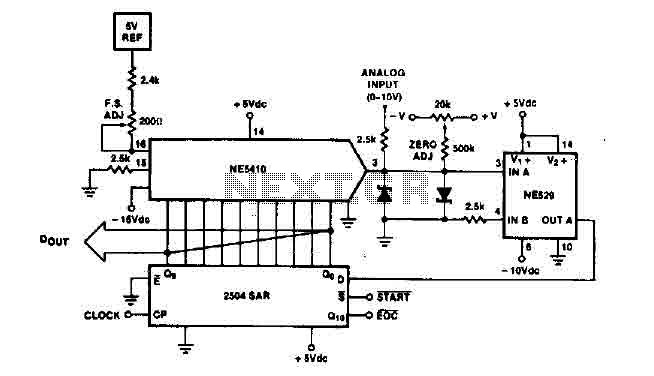
The time IO-bit conversion operates at 3.3 MHz with a clock signal. This converter utilizes a 2504 12-bit register in successive approximation mode, where the conversion signal for the short-cycle end is derived from the first bit utilized in the Successive Approximation Register (SAR) (QLO). It is important to ensure that the input supply to this circuit does not exceed 5V.
The circuit described involves a 12-bit analog-to-digital converter (ADC) that operates using a successive approximation method. This method is characterized by its efficiency in converting an analog signal into a digital representation. The 2504 register plays a crucial role in this conversion process, storing the digital output as it is generated.
At a clock frequency of 3.3 MHz, the ADC processes the input signal rapidly, allowing for high-speed data acquisition. The successive approximation technique involves comparing the input voltage to a series of reference voltages, adjusting the output until it closely matches the input. The first bit used in the SAR, referred to as QLO, is critical for determining the end of the conversion cycle. The short-cycle end signal indicates that the conversion process is complete, and the digital representation of the analog input can be read.
The circuit design must incorporate a power supply that does not exceed 5V to ensure proper operation and prevent damage to the components. This voltage limitation is essential for maintaining the integrity of the circuit and ensuring reliable performance during operation. Proper decoupling capacitors should be included in the design to filter any noise from the power supply, enhancing the stability of the ADC during the conversion process.
Overall, the combination of the 2504 12-bit register, the 3.3 MHz clock frequency, and the strict voltage supply requirements create a robust and efficient analog-to-digital conversion circuit suitable for various applications in electronics.Time IO-bit conversion is 3.3 MHz with a p 3. Clock. This converter uses an approximation 2504 12-bit register in successive operating mode where the short-cycle end signal conversion is taken from the first bit used in the SAR (QLO). Do not exceed 5V input supply to this circuit. 🔗 External reference
The circuit described involves a 12-bit analog-to-digital converter (ADC) that operates using a successive approximation method. This method is characterized by its efficiency in converting an analog signal into a digital representation. The 2504 register plays a crucial role in this conversion process, storing the digital output as it is generated.
At a clock frequency of 3.3 MHz, the ADC processes the input signal rapidly, allowing for high-speed data acquisition. The successive approximation technique involves comparing the input voltage to a series of reference voltages, adjusting the output until it closely matches the input. The first bit used in the SAR, referred to as QLO, is critical for determining the end of the conversion cycle. The short-cycle end signal indicates that the conversion process is complete, and the digital representation of the analog input can be read.
The circuit design must incorporate a power supply that does not exceed 5V to ensure proper operation and prevent damage to the components. This voltage limitation is essential for maintaining the integrity of the circuit and ensuring reliable performance during operation. Proper decoupling capacitors should be included in the design to filter any noise from the power supply, enhancing the stability of the ADC during the conversion process.
Overall, the combination of the 2504 12-bit register, the 3.3 MHz clock frequency, and the strict voltage supply requirements create a robust and efficient analog-to-digital conversion circuit suitable for various applications in electronics.Time IO-bit conversion is 3.3 MHz with a p 3. Clock. This converter uses an approximation 2504 12-bit register in successive operating mode where the short-cycle end signal conversion is taken from the first bit used in the SAR (QLO). Do not exceed 5V input supply to this circuit. 🔗 External reference
Warning: include(partials/cookie-banner.php): Failed to open stream: Permission denied in /var/www/html/nextgr/view-circuit.php on line 713
Warning: include(): Failed opening 'partials/cookie-banner.php' for inclusion (include_path='.:/usr/share/php') in /var/www/html/nextgr/view-circuit.php on line 713
